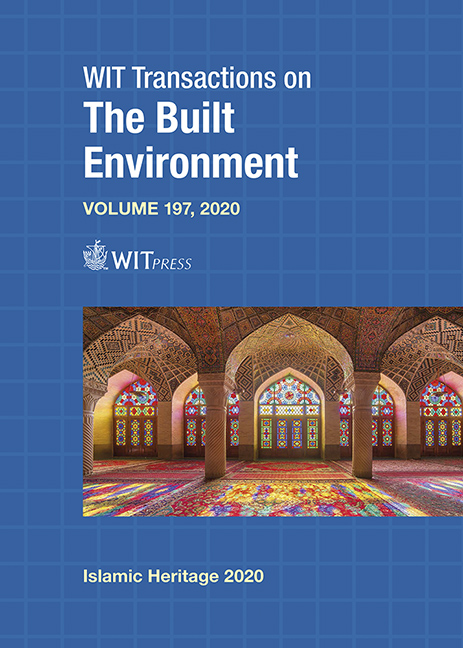LATENCY, LIGHT, AND VOID: KEY CONCEPTS IN CONTEMPORARY ISLAMIC ART
Price
Free (open access)
Transaction
Volume
197
Pages
14
Page Range
187 - 200
Published
2020
Size
921 kb
Paper DOI
10.2495/IHA200161
Copyright
WIT Press
Author(s)
SONDOS BASLOUH
Abstract
Islamic art expresses both visual and conceptual elements. It is based on philosophical ideas stemming from traditional Islamic philosophy and religious thought. This study investigates these ideas and exemplifies them further as visual and material concepts. Since the 19th century, Islamic art has been approached and studied from different angles without deeper investigation of its philosophical meanings. In fact, it was primarily explored through its historical context or examined in terms of its material and decorative qualities. This led to a very generalized understanding of traditional Islamic art and affected the creation of new contemporary Islamic artworks. As a result, contemporary artists have distinguished two separate approaches when working with Islamic art. They either use its established visual elements, like Shirazeh Houshiary, or express its conceptual foregrounding, like Idris Khan. I am proposing that both components should be included within the production of new works of contemporary Islamic art. I suggest that by the detailed examination of the conceptual ideas prevalent in Islamic philosophy, which greatly influenced the visual manifestation of Islamic art from the 10th to the 14th centuries, we shall be able to deconstruct and understand the embedded meaning in Islamic art and use these concepts to create new forms of Islamic art. I investigate and contextualize in this article philosophical concepts that I believe have influenced Islamic art over the centuries and resonate considerably in the construct of contemporary Islamic art. These concepts were for the most part used during the formative period of Islamic art and were discussed by different schools of philosophy. The three concepts examined are the concept of light, which reflects nur or illumination; the concept of space, which reflects void; and the concept of geometry, which reflects latency.
Keywords
Islamic art, contemporary, nur, light, latency, void, geometry, infinity, philosophy, manifestation




